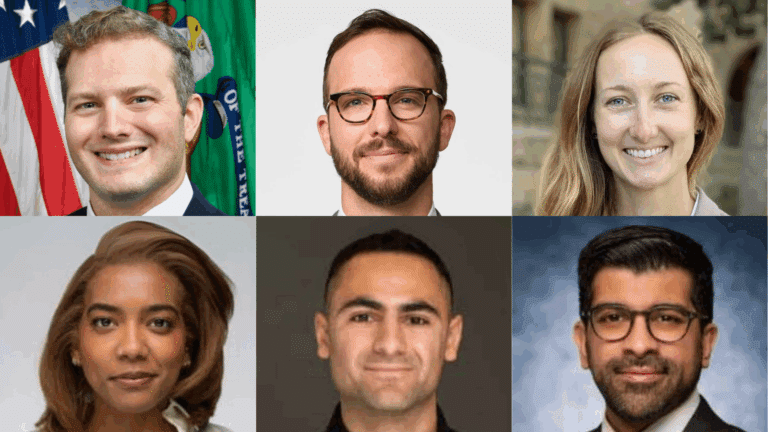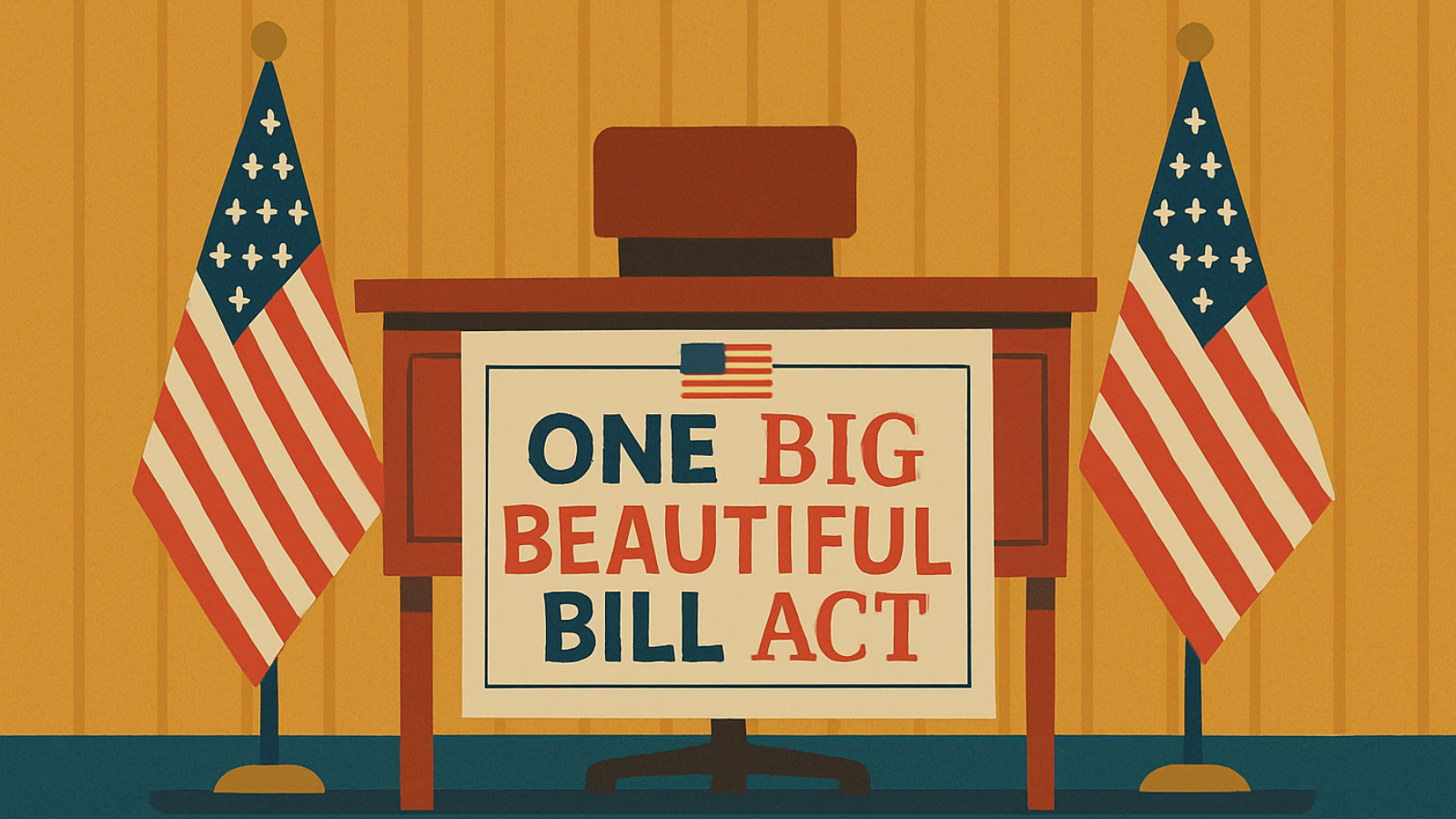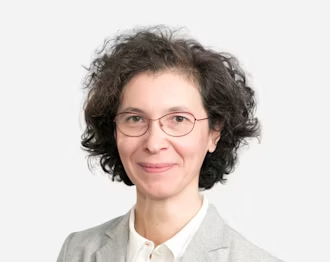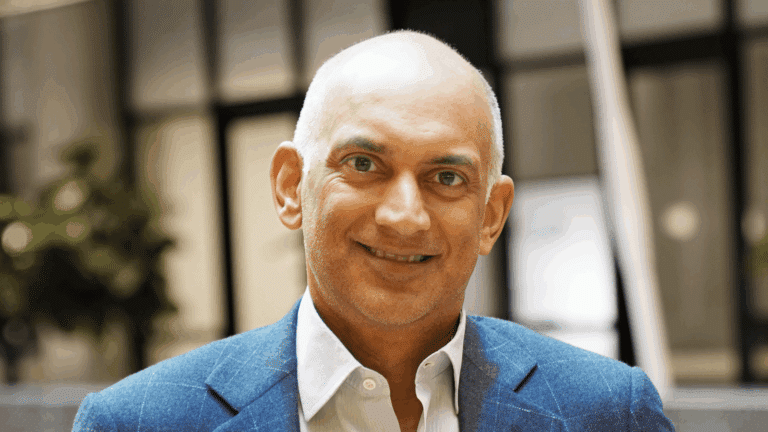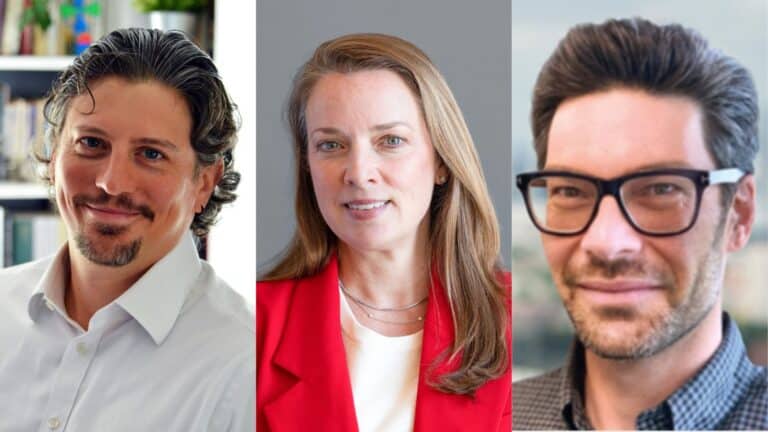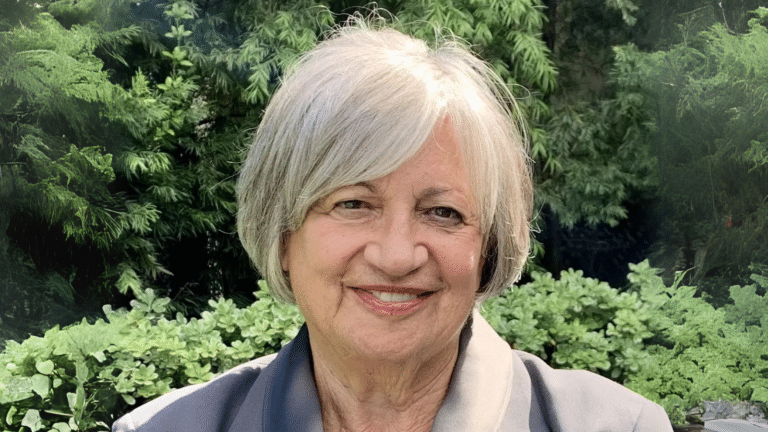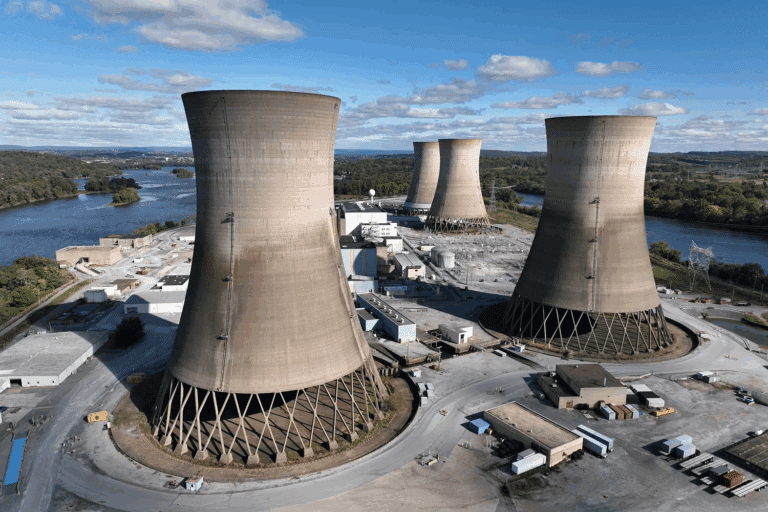Jody Freeman: It’s a comprehensive set of rules and you hear some criticism that, oh boy, they’re targeting coal, but in fact, I think what the agency’s point of view is is that they’re trying to give the industry, the power sector and coal plant operators what they have long said they want, which is a roadmap that fits together that gives them guidance on all of the pollution control rules that could affect their industry, their plants, so they can plan their investments going forward.
Bill Loveless: In April, the Environmental Protection Agency passed four new rules to reduce pollution from fossil fuel-fired power plants. One of the new rules requires many new gas and existing coal power plants to control 90% of their carbon pollution if they plan to operate beyond 2039. The other three rules specifically target coal, requiring the industry to clean up various parts of the value chain, including toxic metal emissions from power generation, wastewater pollution, and coal ash management. And while the Biden administration and other proponents consider the new rules a step in the right direction, opponents argue they will undermine the reliability of energy systems. So how will the EPA’s new regulations impact the energy industry? What makes these standards different from previous attempts to regulate energy emissions? And how might opponents try to overturn them?
This is Columbia Energy Exchange, a weekly podcast from the Center on Global Energy Policy at Columbia University. I’m Bill Loveless.
Today on the show, Jody Freeman. Jody is the Archibald Cox professor of law and the founding director of the Harvard Law School Environmental and Energy Law Program. From 2009 to 2010, she served as a counselor for Energy and Climate Change in the Obama White House. Jody has also previously served on the advisory Council of the Electric Power Research Institute, and as an independent director of ConocoPhillips. I talked with Jody about her work on emission standards under the Obama administration and what she learned about the regulatory process. We also discussed the technicalities of the new EPA power plant rules and the legal avenues opponents might pursue to overturn them. I hope you enjoy our conversation.
Jody Freeman, welcome to Columbia Energy Exchange.
Jody Freeman: It’s great to be with you, Bill.
Bill Loveless: Well, I appreciate your being here. It’s an important issue that we’ll be discussing. But first, as I’m want to do, I like to let the audience know a bit about our guest. And in your case, yours has been a long and distinguished career, including work as a counselor in the Obama White House on energy and climate change. You’ve seen the regulatory process from the inside out. What have you learned from that?
Jody Freeman: Well, I’ve learned that it’s complicated. Regulating is something that a lot of people think is burdensome and costly, and you hear a lot of criticism of government. But I understand, from my experience, how careful and how devoted these civil servants are who are mandated, required by Congress to regulate, to control pollution and do other things in the economy, keep the food and drug supply safe, protect public health, and protect consumers and all the rest. And so my experience really taught me a lot about how to respect that process. It’s certainly imperfect, but I’m a believer in the fact that the government has to regulate to put some guardrails around a market economy. And I have tremendous respect for that initiative.
Climate and energy regulation is extremely complex and difficult. It’s hard to ensure that the government gets it right. You want to make sure the rules incentivize the right kinds of behavior, but you also need industry to do its part. So I learned from my experience that everybody is necessary here to make the system work. Government’s got to do its job, industry, the private sector has to step up to the plate. And my other role as an academic at Harvard, the institutions like that, research institutions, same with Columbia and your center, we have to do our part in doing the research and understanding the complexity of these issues to help both the public and private sector deal with the challenges that we face.
Bill Loveless: Well, now we’ve seen a critical element of the Biden administration’s climate plan, a regulation from the Environmental Protection Agency that would force coal-fired power plants to virtually eliminate their planet warming pollution that they release into the air or shut down. How would this regulation work?
Jody Freeman: Well, first, let me put it in context. These are going to be, once implemented, the first federal rules to regulate the power sector comprehensively. And these rules are about setting standards for CO₂ from the existing fleet of coal-fired plants and new natural gas plants. But we also anticipate that EPA will be setting standards for existing gas plants in the coming short periods. So that will be a comprehensive regime to control carbon pollution from one of the major contributing sectors in the US economy. So if you consider that the transportation sector, cars and trucks is the largest contributor of GHG emissions in the US economy, and we see that the power sector is second, we also see the EPA setting standards for oil and gas-related methane emissions. They are trying under the Clean Air Act to do what that law says, which is to control pollution from all the major sectors that endanger health and welfare. So just to put that in context, it’s not that the EPA has somehow decided, oh, cool, we got to be something about coal. The Clean Air Act says we have to deal with pollution.
Bill Loveless: Part of a bigger plan.
Jody Freeman: Part of a bigger plan. But this package that you’re talking about, the recent package regulating coal-fired plants and new natural gas plants is focused not just on GHG pollution, but they also put out a rule to regulate mercury and air toxics to update the rules for that for power plants. They also set new effluent limit guidelines under the Clean Water Act to control water pollution for plants that will operate over the long term. And they also addressed coal combustion residuals, otherwise known as coal ash, especially legacy impoundments that cause problems for water pollution, but also can cause problems for land-based pollution.
So it’s a comprehensive set of rules and you hear some criticism that, oh boy, they’re targeting coal. But in fact, I think what the agency’s point of view is that they’re trying to give the industry, the power sector and coal plant operators, what they have long said they want, which is a roadmap that fits together that gives them guidance on all of the pollution control rules that could affect their industry, their plants, so they can plan their investments going forward. So instead of doing a piecemeal and saying, “Here’s one rule on air pollution. Here’s rule on water pollution,” they put together a package for everything that addresses the use of coal to produce energy, and that’s what these new rules represent. And we can talk more about some of the features that are attracting conflict and very likely legal challenge, but I’ll leave it there for that.
Bill Loveless: Yeah. And of course, there’s always going to be that whenever you have proposals like this in regulation, the impact on coal does stand out, coal power plants, it would require coal plants that plan to stay open beyond 2039 to cut or capture 90% of their CO₂ emissions by 2032. Again, that really stands out, I think, in this new rule.
Jody Freeman: Yeah. A comment there, I mean, there’s a theme through this rule. These rules are always really complicated. If you go sit down and try to read them, the mind spins, if you’re a civilian, not somebody who pays attention to these legal regulations, but there’s a theme or two that help make them make sense. As you said, if a plant is going to retire by 2039, then it doesn’t have to meet the toughest standard, which is based on carbon capture and sequestration, the 90% reduction standard you mentioned. If you were retire before 2039, you can, for example, meet the standards by co-firing with natural gas. If you retire before 2032, then you’re exempt from the rule entirely.
So what’s the theme here? The theme is if you’re going to run your coal plant in perpetuity past 2039, you’re going to have to meet the toughest standard of pollution control, which is based on carbon capture and sequestration technology. And that makes some sense because if you’re going to operate in perpetuity, you need to do something to control your harmful pollution. And if you’re going to retire earlier, you have to do less. And so there’s an economic logic to the rule that says, well, we don’t want to make these owners of coal plants invest in pollution control when they plan to retire anyway.
Bill Loveless: How many of these power plants are likely to be coal-fired power plants are likely to be operating beyond 2039 anyway?
Jody Freeman: Well, that may be true, but of course you want the rules to sync up with a trend in the industry that’s happening anyway. And they do. What they’re really trying to say is, “Well, if you say you’re going to retire, you really need to. And if you don’t, then you’re going to have to meet a tougher set of controls.” And that makes some sense. The standards for new gas plants basically have a similar graduated approach, meaning, look, if you use your plant a lot, if it’s going to be used as base load over 40% of its capacity, then you have to meet the toughest standard based on what you can accomplish to produce pollution through using CCS, carbon capture sequestration. But if you’re using the plant less, say 20 to 40% of the capacity of the plant, then you meet a less stringent standard and so on. And so the idea is that if you’re using your natural gas plant as a peaker plant very infrequently, then you’re not going to be subject to the very strictest standards. So there’s this flexible and graduated approach that runs through the rule that makes some sense.
And I should mention too, the idea here is that this is typical performance standards, which translates in English into when the Environmental Protection Agency sets a standard, it uses a technology that it considers to be the best system of emission reduction that’s been adequately demonstrated. And that’s what the agency did here. They said, “Look, CCS has been demonstrated. Technically, we can do it. And there are a lot of economic incentives that are bringing it within reach, and over time it will become more and more affordable. And so we’re basing our standard on CCS, especially since we’re not expecting you to comply for many years. So there’s a lot of lead time.”
But what the companies can do is a whole bunch of different things. If they can meet those standards, they don’t have to apply CCS. They can do other things. They can co-fire with hydrogen. They can co-fire with natural gas. They can reduce their utilization. There are a lot of choices that power plants can make. The standard tells them what they have to achieve, but how they get there is really more flexible, and they have a lot of decisions to make.
Bill Loveless: What do you make of the complaints from the utility industry and obviously the coal industry that claims that the reliance on carbon capture and sequestration is misplaced, that it’s very expensive and not fully deployed at any US coal plant today?
Jody Freeman: Well, I think the record is really quite robust on this. I mean, we always look at the EPA’s records because they’re very elaborate and they use all of the evidence that both economic information and data, technological information and data, studies, etc. I think what the agency would say is, “There’s no question that we see carbon capture demonstrated for power plants.” And what they’d cite is the fact that there are incentives in the Inflation Reduction Act, very substantial tax credits and incentives to building CCS that bring the cost very significantly down. And they see the technology as increasingly deployable over time at scale.
Now, one thing you have to know about the Clean Air Act is, when it says that the agency has to set pollution standards based on the best system, there is flexibility to be technology forcing. The Clean Air Act has always been understood, and there’s decades and decades of case law on this, always understood as a technology forcing statute, meaning the agency doesn’t have to base their standards only on technology that’s used widely throughout the entire industry already. It can look out to see what’s been demonstrated and look forward to seeing what’s achievable over the timescale of setting these regulations.
So under the Clean Air Act, it’s fair enough to say we see something has been shown to be demonstrated. We think it’s achievable and we have to look at cost, but we see the cost coming down and we point to the fact that Congress very purposefully adopted a very generous tax incentive system to subsidize CCS in the Inflation Reduction Act.
Bill Loveless: Yeah, so the timing I guess is important here, right? I mean, if you looked at what’s available today in terms of the technology and the extent to which it’s been tested in the United States or elsewhere, you could certainly raise questions about its effectiveness and its cost today. But what you’re saying is the agency can take into account what is likely, what is possible for a given technology over a period of time.
Jody Freeman: There’s a ramp-up time, and we see compliance now move to 2032 back to 2030, but there’s still a ramp-up time for companies to get into compliance. And if you’re operating past 2039, you ought to be looking at that already. They’re already making plans and investment decisions. So I think what the agency would say here is there’s plenty of time to get into compliance. And you have to remember that it’s unclear how many of the facilities really will use, really would install CCS as opposed to doing the other things they can do to get into compliance. So obviously, as I said before, if you retire before 2032, you’re not even subject to the rule at all. There are a whole bunch of plans for whom those requirements won’t even kick in.
But just to pull back because people get tired of all the details and they think, “Well, this is too complicated and stuff.” The idea here is, look, if you’re going to do something about pollution, about climate change and about pollution that’s harmful to human health, which coal-fired pollution happens to be very damaging to human health and there are toxic pollutants that are emitted from coal-fired power plants that affect public health quite separately from greenhouse gases, if you’re going to do something about it, you want to do something that aligns with the trend happening in the industry anyway, and you want to put a floor under that trend. This sector is transitioning to cleaner energy no matter what. It’s the result of go back to the development of hydraulic fracturing, the fact that natural gas displays coal, the fact that renewables have come on so strongly in replacing both coal and natural gas. There is already an economic trend for market reasons that isn’t driven necessarily by regulation, that these rules in theory will cement. They will put a floor underneath it to ensure that it happens in an orderly fashion.
And so I think that’s what’s really going on here. And I think if you put it together with what the Biden administration is doing to control greenhouse gas pollution from the transportation sector and methane from the oil and gas sector, you start to see a comprehensive picture of pollution reduction needing to happen along with energy sector planning to transition to a cleaner energy economy. And I think it all fits together and is part of a larger strategic vision.
Bill Loveless: Yeah, permitting causes a big issue these days. And Dan Brouillette, the head of Edison Electric Institute and his criticism of the EPA rule, said among other things that there’s questions regarding just how long it takes to permit anything, can these plants with this additional equipment receive the necessary permits they need to comply with the new regulation.
Jody Freeman: Well, yes, and I agree, there are some real obstacles to permitting. You can imagine how long it takes, for example, to site new transmission facilities. I mean it’s very… But that is a largely state-led process, and the states are always engaged in a planning process around siting new sources of electricity. And it’s not like they’re starting for nothing. Many states are very sophisticated and advanced on this. There’s integrated resource planning in a majority of US states where the utility sector, with the public Utility commission in those states, is always involved in a looking ahead at the demand for electricity in the state. Will the load demand go up? Is there a greater demand on the grid? What kind of sources are they going to need? How long are they going to operate? Who will build what, where? And that permitting process is really in the hands of the states, right? That’s not a federal problem by and large.
But to the extent that the federal government is involved in permitting decisions, it’s made some moves to revise the permitting regimes that can create an obstacle to this. So we’ve seen some revisions to the NEPA process, for example, the National Environmental Policy Act process that requires looking at environmental costs and benefits to the extent that that can slow permitting. I think the administration’s tried to address some of those problems. And we’ll see if Congress gets in the business of reforming permitting. That would be something Congress could do and has shown some interest in. We’ll see if that comes in the next Congress.
Bill Loveless: Certainly a topic that continues to get a lot of consideration, and we’re all holding our breath to see if something can actually happen on that. But I mean, if you were to put yourself in the critics’ shoes here, to what extent do you think they raise any legitimate concerns? Because these are important business considerations for them.
Jody Freeman: Yeah. I mean, no question. I’m very sensitive to this. Regulation has to work for business and meet them where they are. I often say my experience of the business world, and I was on a board for over a decade, a Fortune 100 company board of ConcoPhillips, and in that role, I really got a view of the regulatory system from the inside of a private sector company addressing it. And what I learned is, look, if the regulators are clear and consistent and can provide a framework that business can then react to, they’ll figure out how to comply, right? It’s like I learned this too about the auto sector when I was working in the Obama administration on auto sector transportation rules for greenhouse gasses. It’s like, show us the roadmap, give us the target, tell us where to go and we will figure out how to get there.
And so the idea is to make sure the regs are flexible enough that they can incorporate new technology as it comes online, that the regs can incorporate and allow for market-based solutions to develop, like cap and trade regimes, emissions trading regimes. You want good regulation that can allow the best, most cost-effective compliance mechanisms. That’s what you’re going for.
Now, when you say, what about the complaints of industry? Look, I think what’s going to happen here is litigation around these rules in which the challengers, this will probably be Republican attorneys generals from the states and some industry players arguing that the EPA is wrong about whether carbon capture is adequately demonstrated. That’s what they’ll argue. And they’ll say that their cost projections, they’ll criticize the cost projections, they’ll criticize the reliability of some of the EPA’s data and assumptions, and that’s what the legal fight will center on. And we’ll see. I mean, I think the record is really very strong here, and EPA has built a really good set of rulemaking records for all of these rules that they’ve put together in this package. It’s no longer a fight about their legal authority, I would think.
If you remember back, the Supreme Court decided the West Virginia case, it was a blockbuster case a couple years ago in which the Supreme Court said to EPA, “You cannot regulate the power sector using this Obama era approach,” which was called generation shifting, right? You can’t set a standard to control pollution from the power sector. That’s based on an assumption about how much clean energy can be substituted for dirty energy, essentially. You’ve got to regulate each source independently, not looking across the grid at how you can substitute in renewables for coal, natural gas. You can’t do that.
And when the Supreme Court decided West Virginia, the EPA was already taking this different approach that you’re seeing in this new rule. They weren’t using the Obama era approach. They weren’t counting on generation shifting. What they were saying is we’re going to set a standard that each of these facilities can meet the CCA’s best standard for those that are going to operate in perpetuity. But if you’re going to retire earlier, you can do other things. Or if you’re going to use your natural gas plant less often, you can do other things. That approach, I think, is highly legally defensible in the sense that it doesn’t violate anything in the West Virginia case. It follows the guidance of the Supreme Court.
So I think that what I would say is the agency is on very solid legal ground in terms of its authority to do this the way it has done it. And the fight will be about is this really a technology that’s adequately demonstrated? And this is what you alluded to, Bill, when you said takes a while for permitting. And what I think the challengers will say is, “Well, we’re going to have to have all these pipelines for CCS.” We’ll also have to have pipelines for hydrogen. If you want to co-fire with hydrogen, where these plants are located will matter. Are they geographically located where there’s pore space to store the captured carbon? Is it feasible for all of the regions of the country that are differently situated? So this will be a big fight about what EPA has done in terms of its reasoning and approach to setting the standard, not a fight about its legal authority.
Bill Loveless: Really. That’s interesting you say that because I was recalling that in the West Virginia case, the court said the Clean Power Plan, the Obama plan was invalid under the major questions doctrine, which is, as I understand, a doctrine that bars agencies from resolving questions of, I think, “vast economic and political significance” without clear statutory authority.
Jody Freeman: Yes. The major questions doctrine, which I view as a menace, a judicial invention that is actually a menace. Basically what West Virginia formally endorsed was something the court has used a few times, but now in West Virginia, it formally embraced it, which is what you just read, boils down to if you’re going to do something really big and important, and will decide what’s big and important, and we won’t tell you exactly how you should decide what’s big and important, if you’re going to do something that has a major impact politically or economically, we’re going to require extra super special clarity from Congress in a statute to tell you you can do it.
And of course, this doesn’t cohere with reality because many statutes provide very broadly worded authority, especially for an agency that’s dealing with problems that evolve over time, broad authority to do things like establish the best system of emission, which could change depending on how technology changes over time. And so Congress often passes these very broadly worded statutes, giving agencies lots of flexibility, specifically because Congress knows things evolve. And what the court has said in West Virginia basically is, “No, we want Congress to have spoken to this issue you’re dealing with now.” And so it either means Congress needed to have been prescient and super specifically prescient or agencies are going to be disqualified from dealing with new things.
Bill Loveless: What’s changed here? I mean, why wouldn’t EPA trip up over this same doctrine here?
Jody Freeman: Well, because in the first instance in the West Virginia case, EPA was interpreting best system of emission reduction in a way that hadn’t been done before, which is to say, “Well, look, we’re controlling carbon pollution from power plants. The best system for that really requires us to look at the reality of the power system. And we should look at the grid, how it operates as an interlocking machine, essentially. And the grid allows us already to ramp up certain sources of energy and ramp down certain sources. We can lower the amount of natural gas we use. We can raise up the renewables.” Grid managers and operators already do this. So EPA said, “Let’s look at the grid as an integrated hole, and let’s set a standard that assumes we can substitute natural gas for coal-fired power.” And assumes we can substitute renewables for both fossil sources of energy because grid managers already do it.
And the court basically said, “Oh, no, no. That approach,” which we call generation shifting, shifting one form of generation for another, “that’s beyond the Clean Air Act best system.” If emission reduction hasn’t traditionally meant that, it means at every plant essentially, you should be able to meet the standard. It shouldn’t require substituting some forms of energy for others. And so what the court said is, “It is legally beyond your mandate to use this generation shifting approach. We need to see Congress be super specific.” So now EPA has done something quite different, and that’s why I say I think it’s on much more solid legal ground, at least in the court’s view it will be because it said, “Okay, best system of emission reduction means the technologies that each of these plants could use.” Each plant could actually install CCS-based technology, or it could if it wants to comply, otherwise they can certainly use co-firing with natural gas or hydrogen, etc.
So I think we’ve solved the West Virginia problem, I think is what I’d say in short. And now, in legal terms, it’s a fight about, is the standard arbitrary or capricious? That’s the legal phraseology is it arbitrary, capricious, because the challengers will say the standard based on CCS is just too ambitious and not realistic and not credible, and that’s what the fight will be about. And in those cases, normally courts defer to agencies, right? Because agencies are the experts. Agencies have the data. Agencies show these elaborate records. And we’ll see what happens here.
Bill Loveless: Yeah, I was going to say normally they would, but that’s not been the trend more recently.
Jody Freeman: No, all bets are off when you get Supreme Court of the United States, which has had a really serious problem with the Environmental Protection Agency in particular, and is a quite anti-regulatory court at the moment. I mean, that’s the reality of the thing. It’s shown a lot of skepticism toward federal regulation in a series of cases that even dating back to the COVID era cases with OSHA trying to require testing or vaccination. Court strikes that down. Court strikes down a temporary eviction moratorium that the CDC put in place in the COVID era cases, and on it goes into the West Virginia Case and so on. And then they radically cut back the authority of EPA to implement the Clean Water Act.
So if you put all of these cases together, it’s very hard not to conclude that the court is deeply skeptical about regulation and environmental regulation in particular. All these rules, these power sector rules are going to be challenged. The litigants are going to try very hard to get them in front of the Supreme Court. I’m absolutely convinced of it. And we’ll see how that goes. But I think the records here, as I keep saying, the rulemaking records are really solid, and EPA will be arguing that they have lots of evidence to back them up.
Bill Loveless: Well, there’s another development when it comes to how the court might respond to a rule like that, and that’s the so-called Chevron doctrine, right? Maybe there’s a little bit of confusion. I mean, the court heard case earlier this year and the decision is expected soon involved in the Chevron doctrine. You’ve written about this. What are your concerns and how do we distinguish between this Chevron doctrine and the major questions doctrine?
Jody Freeman: Yeah. Well, this is for the real nerds. I mean, anybody listening to this-
Bill Loveless: But it’s important, right?
Jody Freeman: Yeah, no, it’s super important and super interesting actually. But it takes a little patience [inaudible 00:29:58]. So if you think about the major questions doctrine as the Supreme Court saying, “Look, there’s just some things we think are too big a deal for you to do as an agency without very express explicit statutory authority,” think of it that way, a constraint, a limit on agency’s ability to interpret broadly worded statutes to authorize them to regulate, the Chevron doctrine is really a legal principle established in a case called NRDC versus Chevron in the 1980s, which says, look, if a statute doesn’t address an issue, it leaves a question ambiguous or it leaves something, a silence on a matter. In the first instance, the interpretation should go to the agency. They should be able to interpret the gap or the ambiguity of the silence. And if they pick a reasonable interpretation, then we should defer to them because they’re the experts. They implement the statute every day, and they should be the gap fillers in the first instance, as long as the court says what they’ve done is reasonable.
What the court is poised to do in a case that they heard this term, and that I think will be decided this June almost certainly, is whether they want to overturn that principle or limit that principle to fewer situations. And what it essentially stands for is the court will decide what these laws mean without giving any deference to the agency, even though the agency is the expert and the agency was tasked by Congress with implementing the law.
If you combine this possibility of overturning this principle of deference with the major questions doctrine, what you really get is a court that wants to be the decider and a displacement of the agency from the primary rule of implementing these statutes, filling in the gaps and ambiguities. As long as they’re reasonable, you displace them and you say the court essentially will be deciding more questions of policy under the guise of deciding legal questions. I think that’s very worrisome.
The major question doctrine is based on a premise that says, well, Congress knows how to be explicit and they can speak clearly. And number one, that overlooks the fact that Congress did speak clearly when it wrote the Clean Air Act and gave broad interpretive authority of the agent. They already said, “We’re going to give them a lot of room to maneuver.” And it also assumes Congress easily can correct these things when as we know it’s very difficult for Congress to pass legislation in the modern era, and there needs to be some flexibility for agencies to interpret and implement these statutes on a daily basis.
So that’s what the fight’s about. It’s not something that most people relate to in their daily lives, but it has real consequences for everyday Americans because as much as we may dislike government bureaucrats, you hear a lot of criticism, the fact is you need a food and drug administration to regulate the food and drug supply and make sure it’s safe. And you actually need an EPA to make sure that you’ve got safe drinking water, safe water for recreation, air that’s safe to breathe and so on. And so these agencies perform a critical function, and the court seems to have a lot of skepticism about their essential role.
Bill Loveless: And for all the justification that you see in the EPA rule in this case and all, that really is a concern of those who would support this move by the agency, how this will sit with this particular court. Another consideration is something called the Congressional Review Act, and it allows, as you know, lawmakers to void rules after they’ve been finalized by the executive branch. And that’s a big concern for the Biden administration if Donald Trump is elected and Republicans take control of Congress, but it would apply only to rules adopted in the last 60 legislative days of the 2024th session congressional session. We won’t know until Congress adjourns when that period is. But do you think this is much of a risk for this new EPA rule?
Jody Freeman: Well, I think this package of rules on the power sector, like many other rules the administration is working on related to climate change related to energy systems, the idea is they’re on a political and illegal clock. That’s the way to think about it. There’s obviously the election looming, and so they want to deliver on the rules and policies that they said were priorities. So they want to complete their agenda on climate change, and these rules are a key part of that.
But there’s the legal clock as you mentioned, which is that you have to finish rules by a certain deadline in order to avoid them being essentially disapproved or canceled, if you will, after the fact. And that’s what you referred to when you talked about this law called the Congressional Review Act, which essentially a mechanism that allows a new Congress and presumably a new president, because otherwise if the president gets reelected, he just vetoed this, right? But it allows a new Congress on a fast-track basis only with a majority-only vote, no filibuster possibility to reach back and cancel legally effective rules, as you say, going back only 60 legislative days. But it turns out that as you count legislative days, if you really count session days, you wind up with that amounting to about six months of reach-back potential.
So that’s why you see a real rush to get these rules done by around now or close in time around that to try to avoid being within the six-month window. If for example, the Congress were to flip and be Republican-controlled, and we were to get a new president, there would be some potential, which is what happened in the early days of the first Trump administration,, that they could reach back and cancel some rules. And that’s what people are worried about. This happens by the way, in every administration. There’s always a rush to make sure they finish their rules in time to avoid the Congressional Review Act process.
Bill Loveless: I want to get back to one other aspect of the new EPA rule on the power plants. There are always concessions made when writing regulations, and one of the concession here was to leave out of this new rule gas-fired power plants that are currently in operation. And that said, it would to future gas power plants as we’ve discussed. Why leave out existing gas power plants now?
Jody Freeman: Yeah, it’s just really complicated because there’s a certain amount of gas we’re going to need in the system for a transition period. People talk about gas as a bridge fuel. And so you need to get the rules right to ensure that you have enough gas in the system to, say, support renewables as they come online. But you don’t want to set standard so stringently for those gas plants that you make it impossible for any gas to operate in the system economically. You certainly don’t want to have a counterproductive result where you’re actually incentivizing more coal to stay online longer because the requirements for gas are so stringent.
And so there’s this interplay here of trying to balance the amount of gas you still need in the system against wanting to move forward in driving cleaner energy to reduce the public health consequences and the climate consequences of this pollution. And I think it just became extremely hard and complicated to get that done at the same time as the other pieces. And so they said, “We’ll turn to this next in the next cycle.” I think that’s a priority for the agency should the president be reelected.
Bill Loveless: What about reliability? Again, we’ll get back to those who have been critical of the new rules. They say at a time when the demand for electricity is increasing and will only increase that much more so, there’s a risk here of disrupting the reliability of the grid if the agency moves too quickly or too aggressively. Is there any reasonable aspect to that?
Jody Freeman: I think it’s always legitimate to ask questions about reliability, and we all care about reliability. I do think though, being hyperbolic about it and the sky is falling, this is a bit much. I mean, you see a really concerted political effort here to suggest that the grid just can’t do this, just can’t support a cleaner energy system. I don’t think that is quite right. I don’t think it reflects reality. If you think about this, we already have grid managers, grid operators, we have state level processes already working on planning for higher load, which are projected. We’ll see higher load because let’s face it, if we electrify everything right, if we’re moving to a more electric transportation system, if we’re making buildings more efficient, electrifying buildings, of course that will have an impact on the demand for electricity. But states are already well long in the planning process. They have the tools they need to engage in planning for this transition.
And so while I’m not saying it’s always easy, but I’m saying there are well-established processes at the state level to make plans for increased load to adjust what gets built, what gets used, what gets put where, and how the components of the system work together. And so I am not alarmed. I don’t give into the alarmist concern because it’s not as if grid managers are standing still. It’s not as if the state public utility commissions aren’t aware that they have to plan for a future that looks a little different than now. You see now a lot of attention paid to AI as it’s going to crash the system. So much load requirement. Well, we know how to deal with load. In fact, the utility business, this is their business. They should want us to electrify everything, right? Because then it just increases demand for their products. So I think we have a system here that’s very capable of managing the transition that these standards are part of, and that the market is really already driving anyway.
Bill Loveless: At the end of the day, it’s up to Congress to make sure that laws remain relevant and up-to-date, laws like the Clean Air Act. But that Clean Air Act hasn’t been amended since 1990. So that leaves us with agencies like EPA doing their best to expand or reduce regulations based on who sits in the White House. Not necessarily a prescription for stability. Right?
Jody Freeman: Well, I don’t think I’d put it that way. I think Congress should do its job, first of all. I agree with everybody who says that. I think that the fact that Congress hasn’t revisited major environmental laws in a very long time, as you mentioned, that the last update to the clean air was 1990. I think that is a problem, and I think it makes it very, very difficult for agencies, whether they’re in Republican administrations or democratic administrations to do their jobs because new problems arise and they have to adapt these old statutes to new technology, new science, etc.
Now, at the same time, these statutes were built to last. Congress passed the Clean Air Act. They passed other public health and safety acts, Food and Drug Act. They passed these laws with flexibilities in them to anticipate the fact that the future may not look like the present and to give discretion to expert agencies.
Now, you can say you don’t believe in the experts, you don’t think they know anything. I don’t agree with that assessment. I think we have a lot of very serious expertise in these agencies dealing with these statutes over decades, career staff who’ve been at this a very long time. And we have a court, I think, a Supreme Court at the moment that believes that that expertise is essentially not worthy of very significant respect, and that Congress, when it gives them these rather broad powers, really in the court’s view, hasn’t spoken specifically enough. So we’re at a moment where I think the statutes have some flexibilities in them that agencies, in order to do the job they’ve been assigned to do, have to have, they have to have some flexibility and discretion, and I’m not sure that this is a bad system, right? Administrations come and go. They have policy prerogatives. And if they want to fill the gaps in the statutes in a reasonable way that the statutory language can tolerate that fits within, that’s a reasonable solution With the statutory language, I don’t see why we shouldn’t defer to them.
It’s funny because this idea that we defer to agencies when they fill in the gaps in statutes, that used to be a conservative idea. The Chevron case was a case during the Reagan administration in which the EPA at the time wanted to give companies flexibility to address pollution through bubbling and netting, meaning trading off emissions in one part of their facility. They could reduce them in one place, and that would allow an increase in another place. It was a market-based approach to pollution control, a conservative idea. And the Supreme Court said, “Yeah, you can do that. That seems reasonable,” within the language of the statute. And suddenly, this essentially conservative idea has now become this bugaboo of the conservative movement because agencies now they think only do stuff when democratic presidents are in the White House.
And so if we can hamstring agencies, it will mostly hamstring democratic agendas. I think that’s the theory against Chevron, against this flexibility. So I think that’s what we’re witnessing here is an anti-regulatory moment, deep skepticism about the federal regulatory state, and the Supreme Court completely buying into that conservative agenda.
Bill Loveless: Yeah, how important it is to understand the perspective and history behind these laws and where they put us today.
Jody Freeman, thank you for joining us today on Columbia Energy Exchange.
Jody Freeman: It’s been my pleasure. Thanks, Bill.
Bill Loveless: That’s it for this week’s episode of Columbia Energy Exchange. Thank you again, Jody Freeman, and thank you for listening. The show is brought to you by the Center on Global Energy Policy at Columbia University School of International and Public Affairs.
The show is hosted by Jason Bordoff and me, Bill Loveless. The show is produced by Aaron Hardick from Latitude Studios. Additional support from Lilly Lee, Caroline Pittman and Q Lee. Roy Campanella is the sound engineer.
For more information about the show or the Center on Global Energy Policy, visit us online at energypolicy.columbia.edu or follow us on social media at Columbia U Energy. And if you really like this episode, leave us a rating on Spotify or Apple Podcasts. You can also share it with a friend or a colleague to help us reach more listeners. Either way, we appreciate your support. Thanks again for listening. See you next week.
